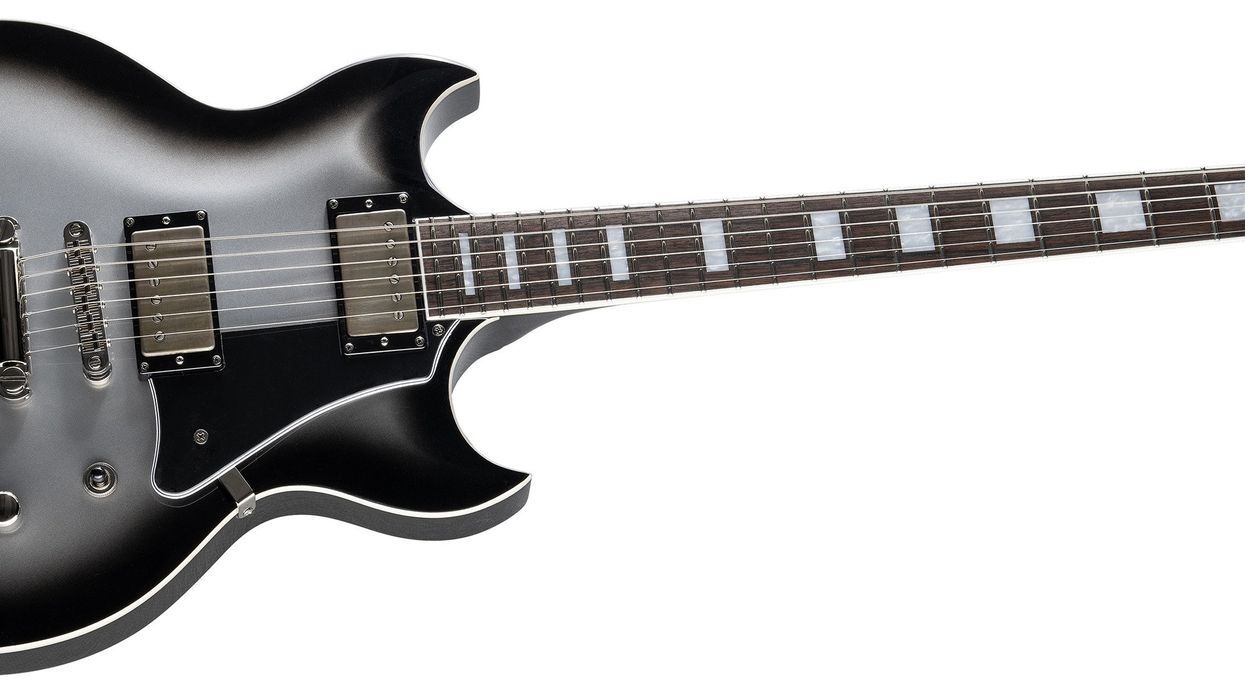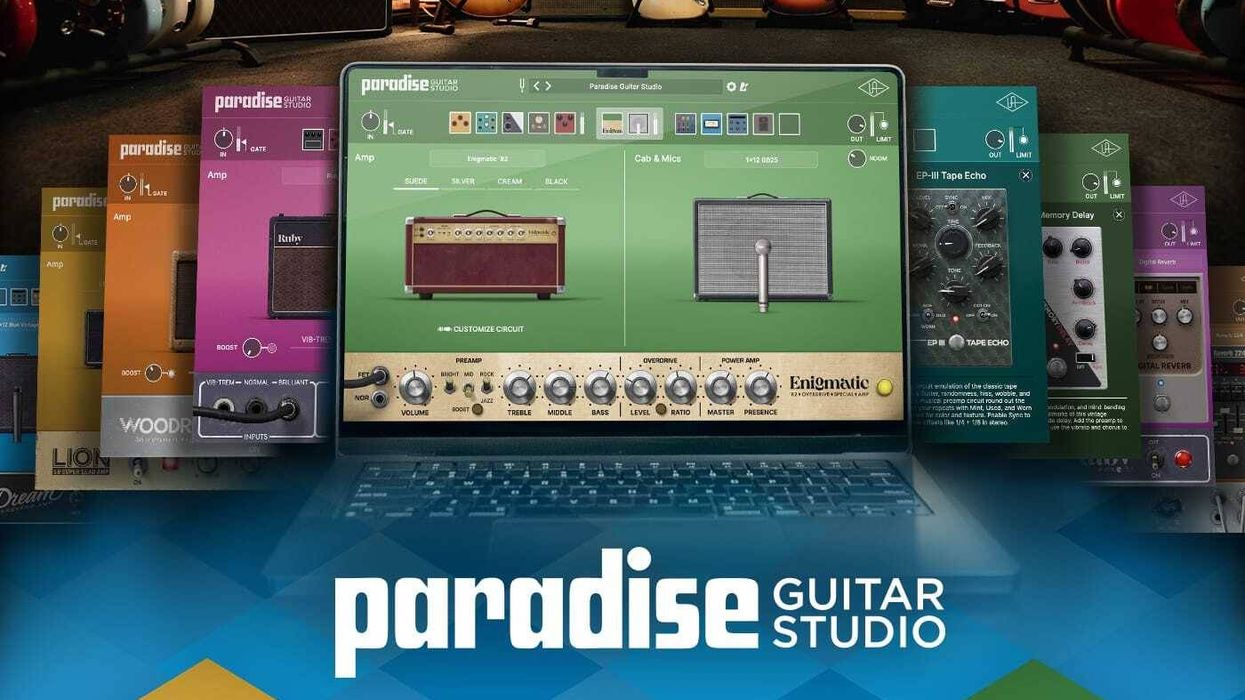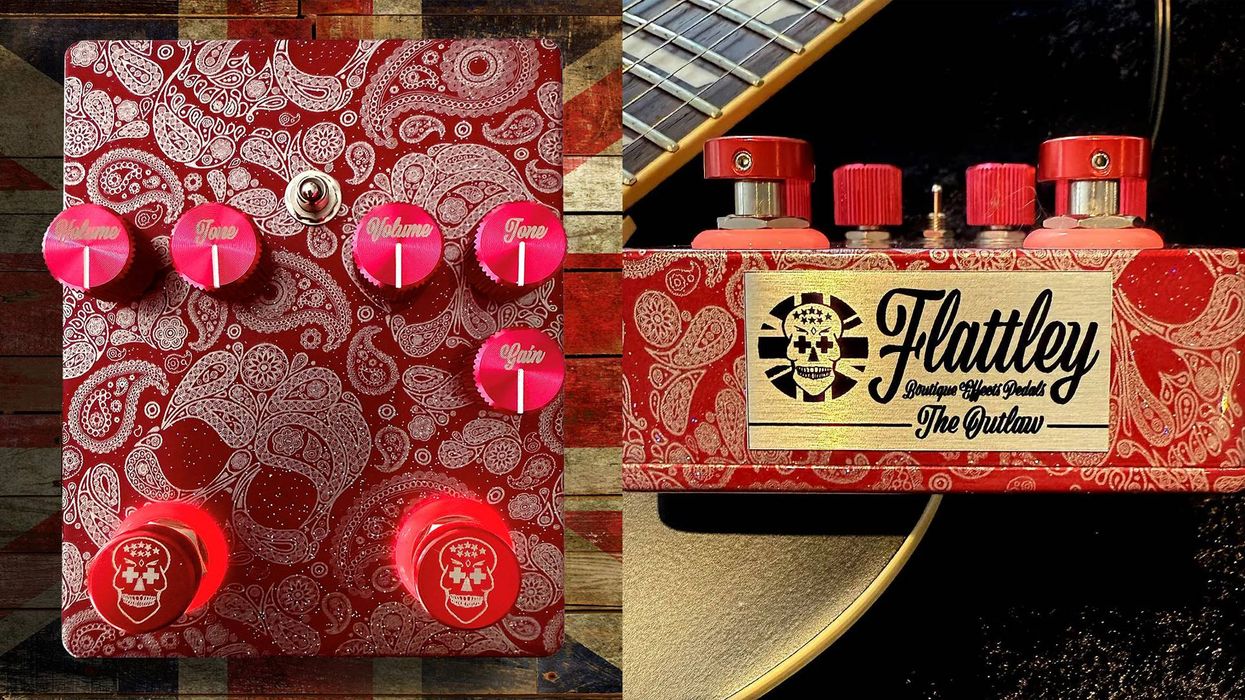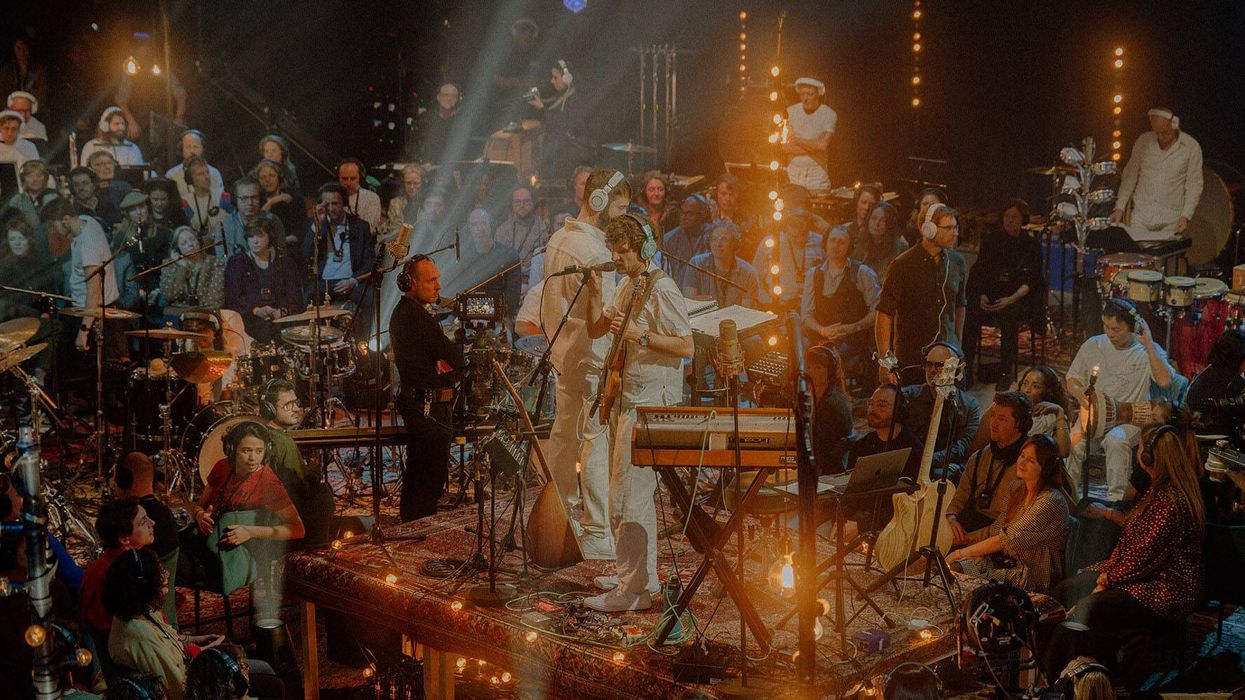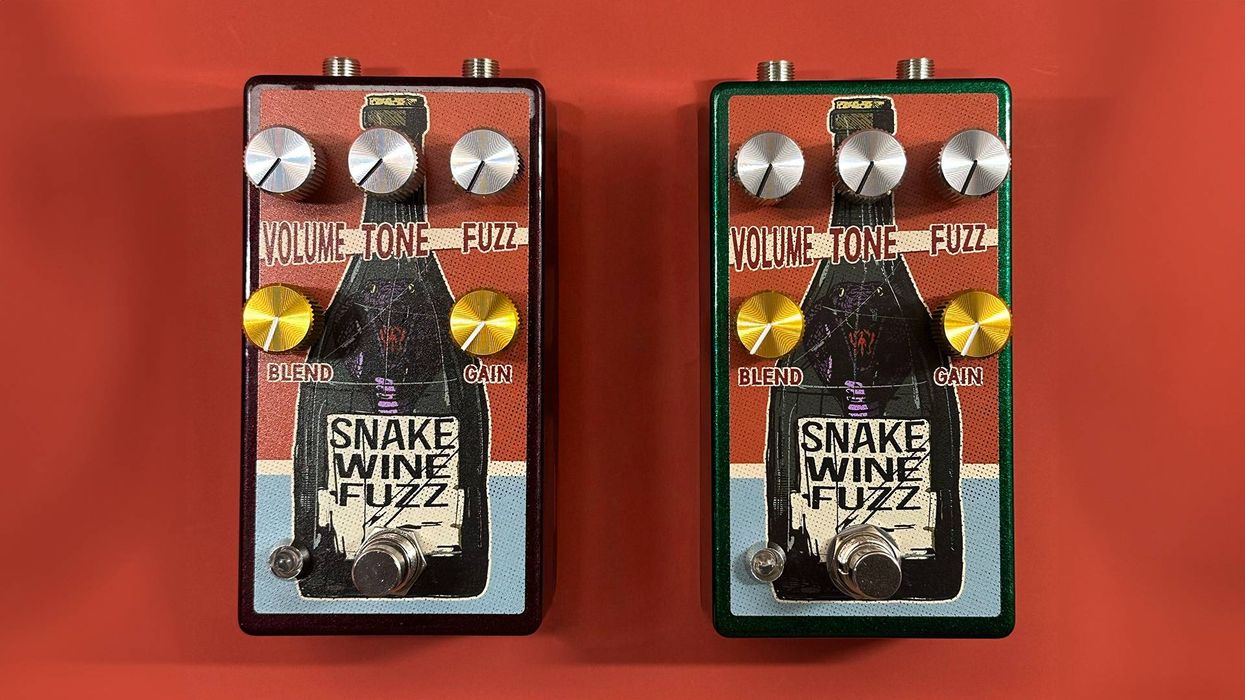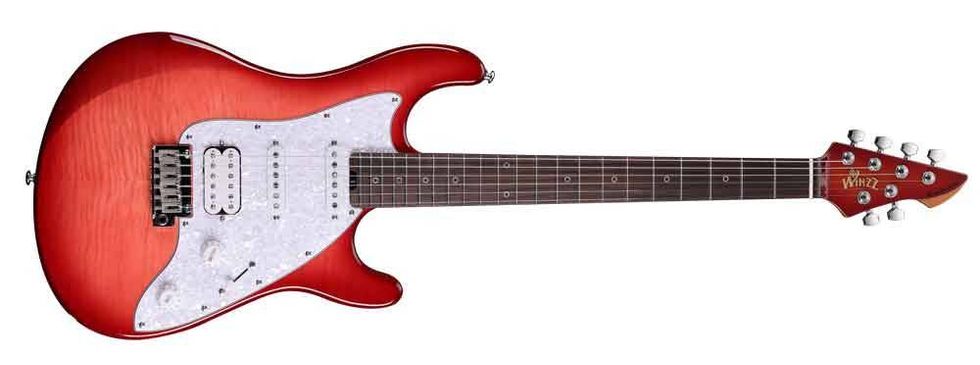ESP debuted new Signature Series, limited-edition models and basses at NAMM 2024.
LTD GH SV-200
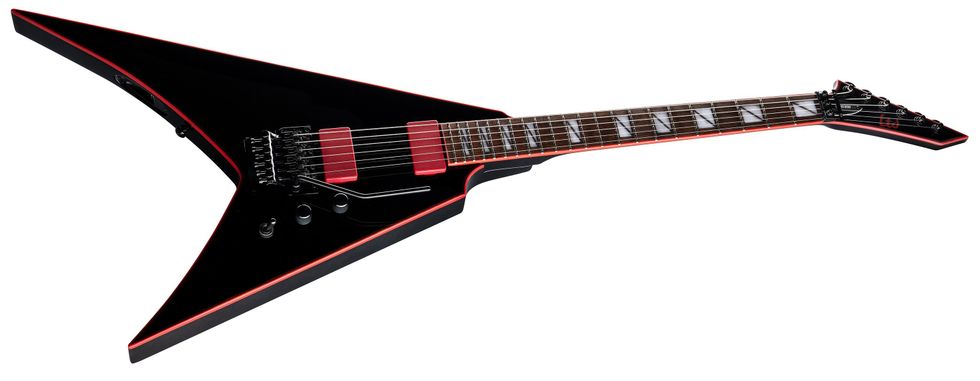
The LTD GH SV-200 is the newest Signature Series guitar for Gary Holt, one of the most influential musicians in the world of thrash metal. The LTD SV GH-200 is a more affordable version of Holt’s LTD GH-SV model announced in 2023, with the same offset ESP SV body shape, black finish, and red multi- binding as its higher-end version. Its features include bolt-on construction at 24.75” scale with a mahogany body and three-piece mahogany neck, a roasted jatoba fingerboard, 22 extra-jumbo stainless steel frets, a Floyd Rose 1000 double-locking tremolo, LTD tuners, and a set of direct-mount high-output ESP LH-301 pickups with red covers.
LTD GL Desert Eagle
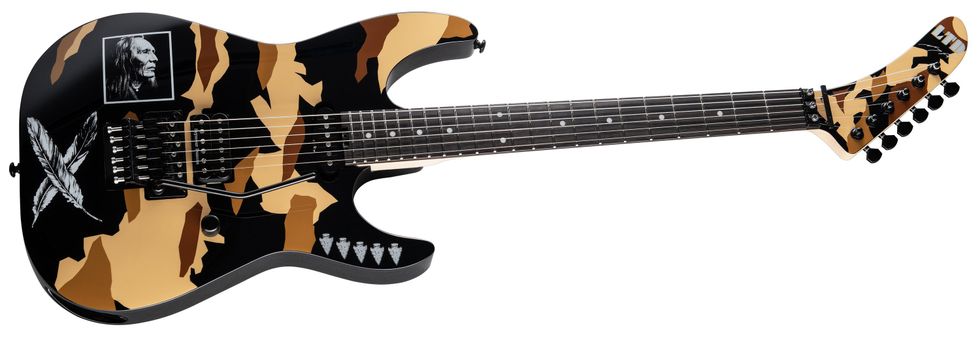
ESP debuted a new Signature guitar for the company’s longterm artist endorsee George Lynch (Dokken, Lynch Mob) with the LTD GL Desert Eagle, a re-imagining of his famous Kamikaze model. It features an alder body and maple neck, joined with bolt-on construction at 25.5” scale. Its neck profile implements George’s original U shape, and it includes a Macassar ebony fingerboard and 22 extra-jumbo stainless steel frets. Components on the LTD GL Desert Eagle include a Floyd Rose 1000 SE double-locking tremolo with stainless steel screws, a special low-friction volume pot, and a special pickup combination that includes a Seymour Duncan Distortion pickup in the bridge, with push-pull coil splitting on the single volume knob, and an ESP SS-120 single-coil in the neck position. A portion of the proceeds of every LTD Desert Eagle will be contributed to George’s non-profit charity that assists Native American communities and causes. This guitar includes a deluxe ESP hardshell case.
LTD MK EC-FR

The LTD MK EC-FR is a new addition to the Signature Series for Mille Petrozza, founder of pioneering and influential thrash band Kreator. The MK-EC FR starts with the familiar single-cutaway shape of the ESP Eclipse, but offers a flat-top alder body with no bevels, horn scoop, or arm cut, and features black binding on the body, neck, and headstock. Other features include neck-thru-body construction at 25.5” scale, a three-piece thin u-shaped maple neck, and Macassar ebony fingerboard with mother-of-pearl dot inlays, Luminlay glow-in-the-dark side markers, and 24 extra-jumbo stainless steel frets. The all-black hardware on the MK-EC FR includes a Floyd Rose 1000 SE double-locking tremolo with stainless steel screws, precise Grover tuners, and a set of direct-mount EMG 81X (bridge) and EMG 85X (neck) active pickups with brushed black chrome covers. It includes a deluxe ESP hardshell case.
LTD Royal Shiva
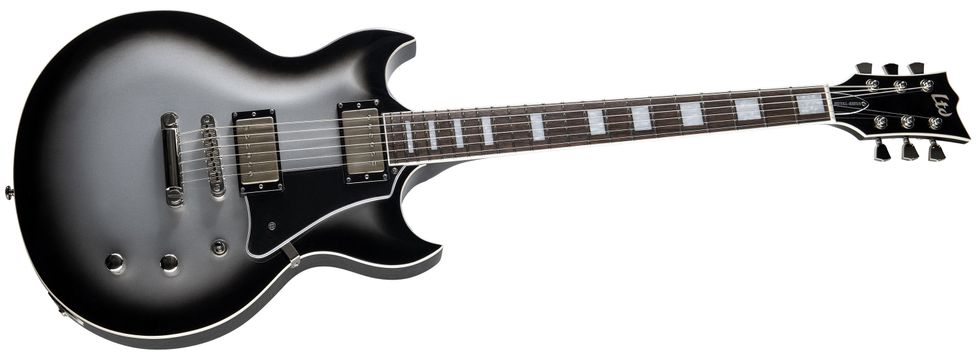
The 2024 NAMM Show also saw the debut of a brand new Signature Series guitar for Bill Kelliher of award-winning American metal band Mastodon. Based on a guitar that Kelliher had built by the ESP Custom Shop, the LTD Royal Shiva has a completely unique double-cutaway body shape with a Silver Sunburst finish that extends to the back of the guitars body and neck. The Royal Shiva uses traditional set neck construction at 25” scale, joining a maple-capped mahogany body with a three-piece u-shaped maple neck. Its Macassar ebony fingerboard has large mother-of-pearl block inlays and 22 extra-jumbo frets. Components on the Royal Shiva include a TonePros TOM bridge and tailpiece, LTD locking tuners, a bone nut, a multi-ply black pickguard, and a set of Kelliher’s signature Mojotone Hellbender humbucker pickups. This guitar also includes a deluxe ESP hardshell case.
LTD TED-EC
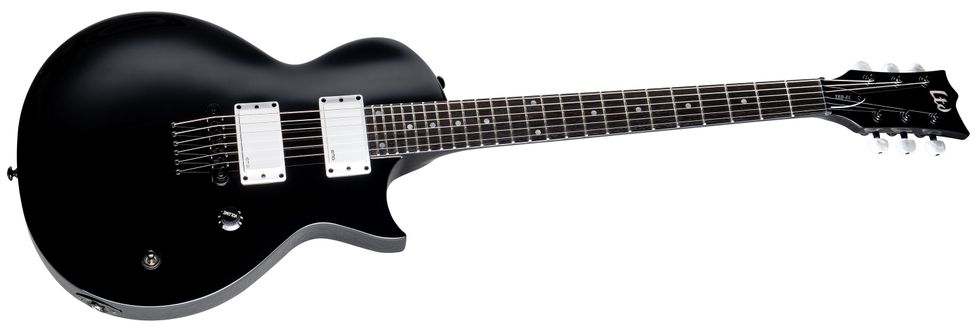
The LTD TED-EC joins the Signature Series of Ted Aguilar, guitarist of Bay Area thrash band Death Angel. This single-cutaway EC has a Black finish sharply contrasting with white pickup covers/rings and white pearloid tuners. The TED-EC features special design aspects like neck-thru-body construction at 24.75” scale, mahogany body with maple cap, thin u-shaped three-piece mahogany neck, and Macassar ebony fingerboard with mother-of-pearl dot inlays and 24 extra-jumbo frets. Components on the TED-EC include a recessed Gotoh TOM bridge with string thru body, LTD locking tuners, and a set of EMG 81 (bridge) and EMG 60 (neck) active pickups with white covers. The TED-EC includes a deluxe ESP hardshell case.
LTD FL-4

Two new Signature Series basses also made their debut at the 2024 NAMM Show. The LTD FL-4 is the new signature bass for Fred Leclercq, bass player for German thrash metal band Kreator. The FL-4’s body shape is an adaptation of ESP’s Forest/F shape, but with a cutout at the tail end. It has an equally distinctive finish, with Satin Black that bursts to Red on the front and back edges of its body. The FL-4 features neck-thru-body construction at 34” scale, pairing an alder body with an extra-thin five-piece maple/purpleheart neck and Macassar ebony fingerboard with black binding, red offset dot inlays, and 24 extra-jumbo stainless steel frets. Its sound is driven by a single active EMG 35P pickup. Other components of the FL-4 include a Hipshot A Style bridge and Grover mini-tuners. The FL-4 includes a deluxe ESP hardshell case.
LTD MLB-4

ESP also announced the new LTD MLB-4, the company’s first Signature Series bass for Mike Leon of Brazilian-American groove/thrash metal band Soulfly. The MLB-4 is based on the musician’s personal ESP Custom Shop B Series bass, and features a textured sandblasted finish on its swamp ash body, a complementing black satin headstock, and an open-pore finish on the back of its extra-thin five-piece wenge/purpleheart neck. The MLB-4 features sturdy 6-bolt construction at 35” scale, a Macassar ebony fingerboard with 24 extra-jumbo stainless steel frets, and a premium active pickup set with two Nordstrand Big Splits. Other controls and components include individual volume knobs for each pickup, ABQ-3MS three-band EQ controls, Gotoh tuners, and a Gotoh 404BO-4 hardtail bridge. This bass includes ESP deluxe hardshell case.
ESP LTD Deluxe EC-01FT
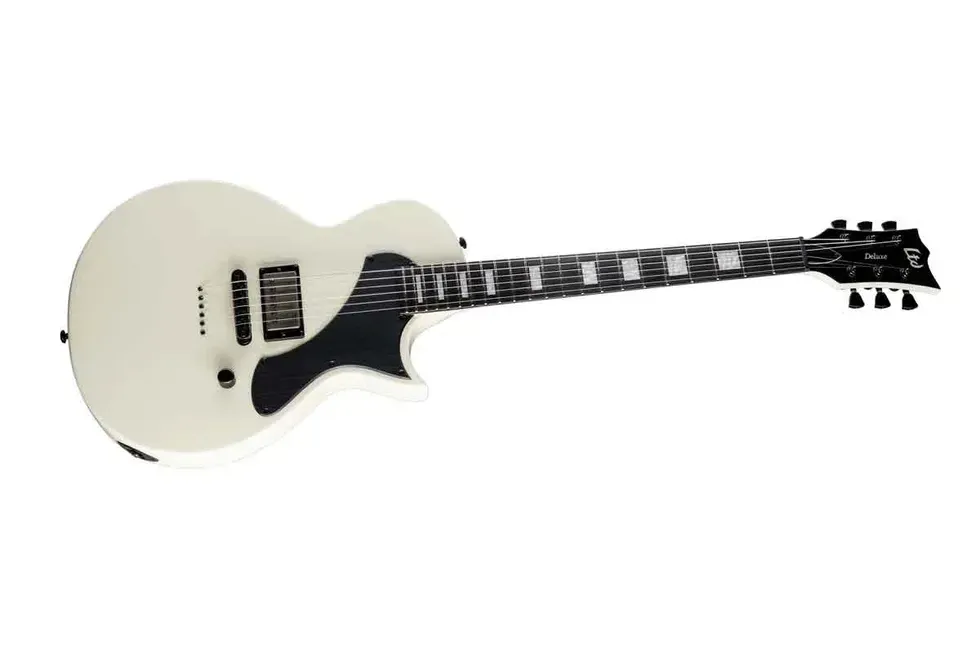
The LTD Deluxe EC-01FT is a single-cutaway guitar with a flat-top body and clean electronics layout. It features a comfortable 24.75” scale with a smooth set-thru heel construction. It features a mahogany body and a distinctive brushed black pickguard. Its mahogany neck has a 43mm nut, slightly wider than is standard for EC models, allowing for comfortable ergonomics in power chords and fluid lead lines. It features a Macassar ebony fingerboard with pearloid block inlays and 22 extra-jumbo stainless steel frets. A recessed TonePros TOM bridge with string thru body keeps string height low and comfortable while maximizing resonance. Other components include LTD locking tuners.
Perhaps the biggest feature of the EC-01FT is the Custom 14, a new custom pickup designed exclusively for ESP by Seymour Duncan. Purpose-built to cover the specific needs of the ESP player, the EC-01FT’s flexible and dynamic Custom 14 pickup offers the range of tones needed by the contemporary guitarist, able to handle everything from clean, chimey intros to sizzling rock, classic metal, and hardcore tones, as well as the most crushing modern chugging and articulate, angular rhythm lines. A push-pull control on the volume knob splits this pickup to a wide-ranging single coil bridge tone.
Horizon Custom '87
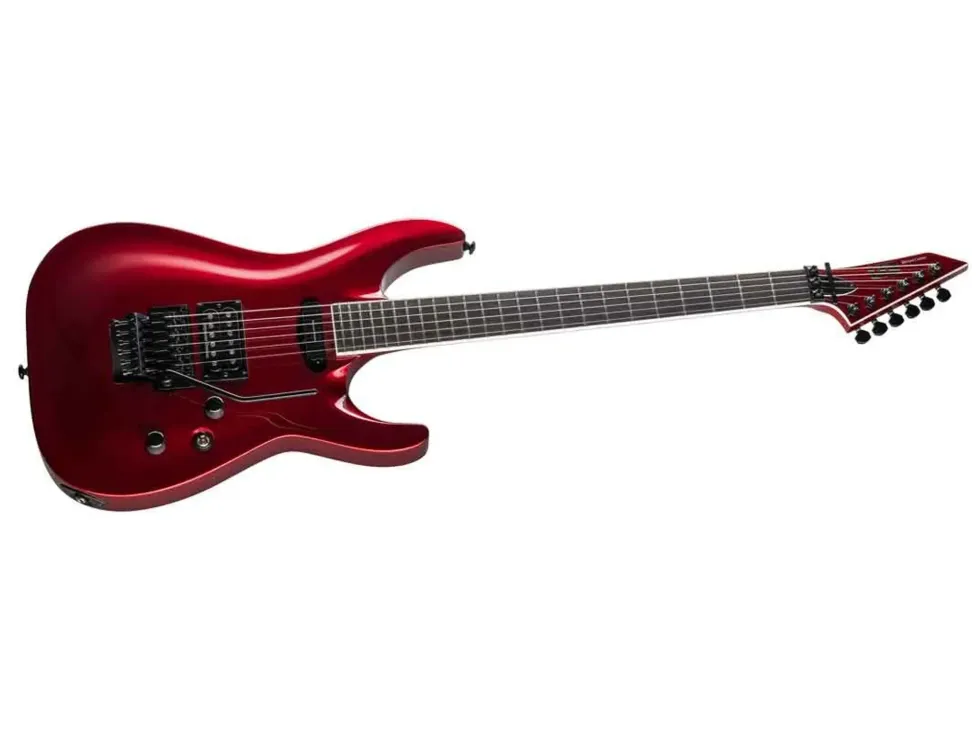
The Horizon Custom ’87 takes the archtop body of the ESP Horizon, and offers it with minimal adornment for unencumbered playability. It offers neck-thru-body construction at 25.5” scale, pairing an alder body and an extra-thin three-piece maple neck. The Horizon Custom ’87 features a Macassar ebony fingerboard with 24 extra-jumbo frets and no inlays (using side position dots, like the 1980s Horizon version). Its components include a Floyd Rose 1000 double-locking tremolo, a Seymour Duncan TB-5 Custom Trembucker pickup in the bridge, and a Seymour Duncan Hot Rails pickup in the neck position. Coil spitting for single-coil tones on either or both pickups is available via push-pull controls on the volume and tone knobs.
ESP also announced updates to the Signature Series guitar of Lars Frederiksen of the iconic punk rock band Rancid. The LTD Volsung is now being offered in a new Oxblood Satin finish, and its design has been modified to a 22-fret design, maximizing the sweet spot for the neck pickup. The Volsung’s components include a TonePros locking TOM bridge and tailpiece, Gotoh tuners, and a set of Lars' signature EMG pickups, the LF-DMF. It also offers a unique three-control configuration, with individual knobs for each pickup volume plus a tone control. It includes a deluxe ESP hardshell case.
For more information, please visit espguitars.com.
